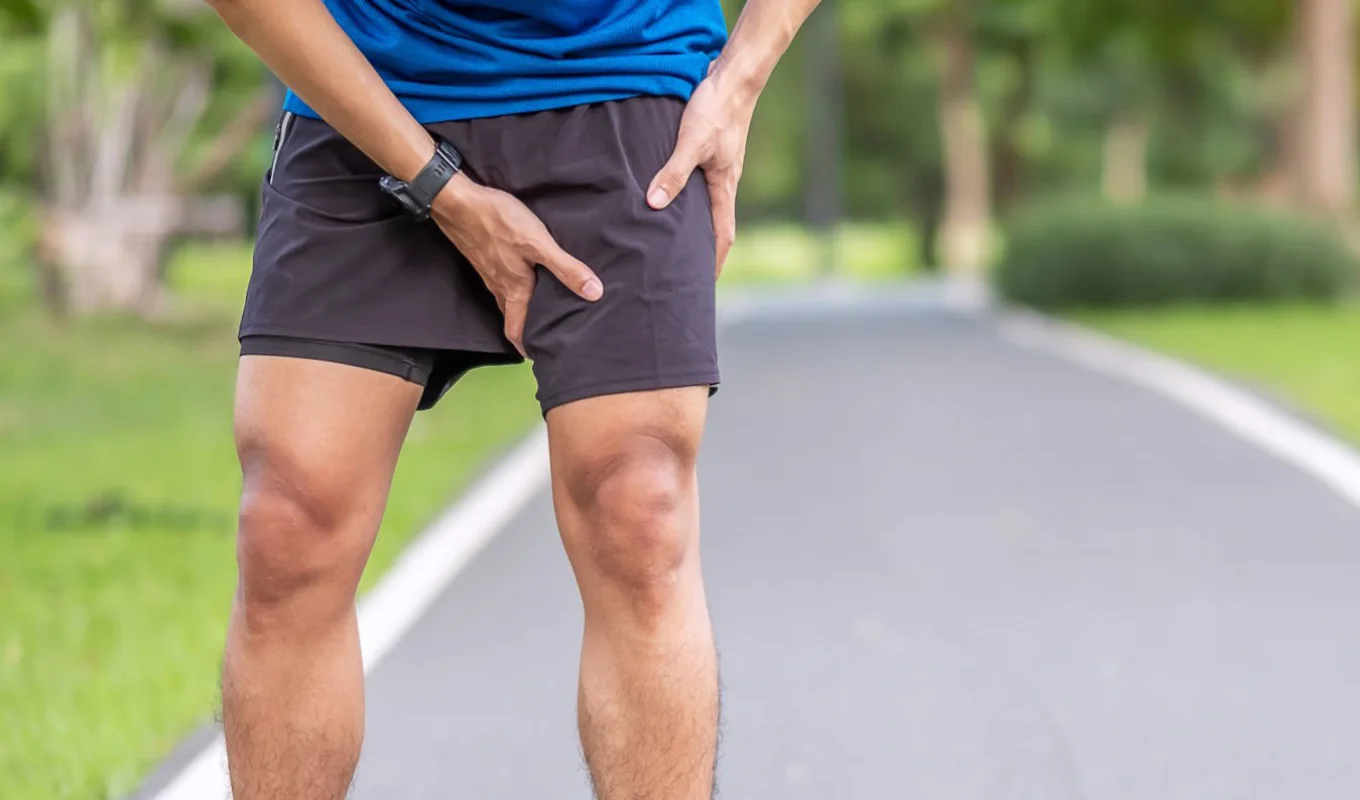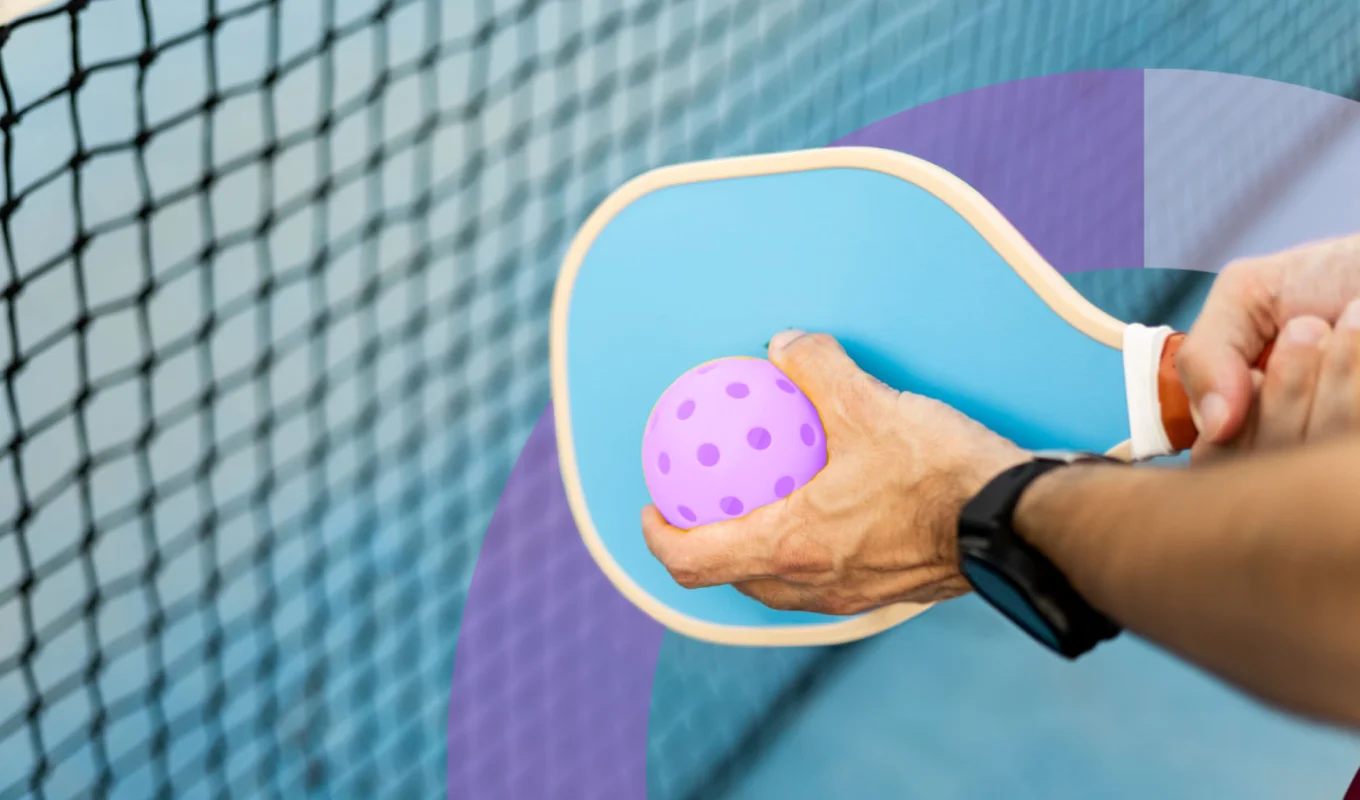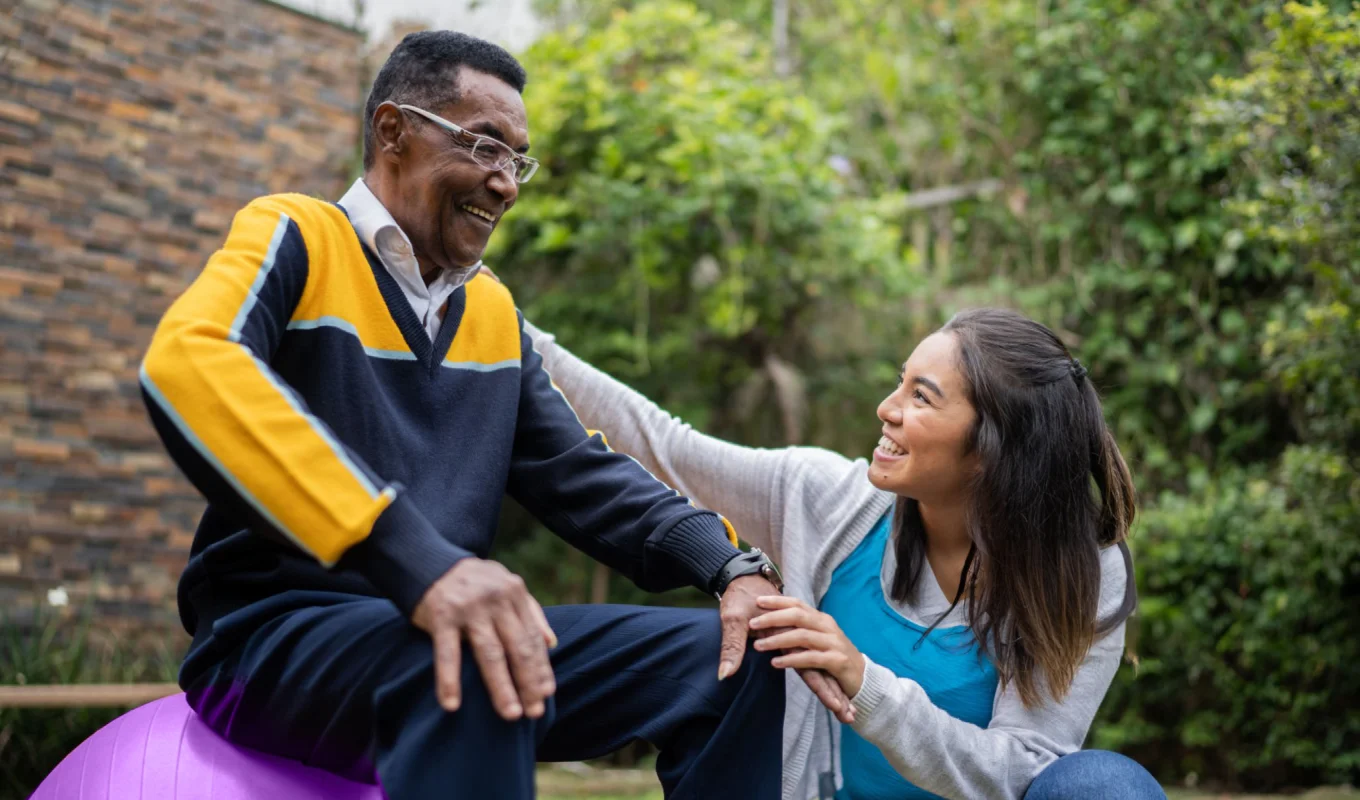A pulled groin muscle is the bane of many jokes, considering it's located where the lower abdomen and inner thighs meet. As amusing as others may find those wisecracks to be, people who suffer from a painful groin strain know it's no laughing matter.
Sharp discomfort and limited mobility can significantly impact your daily life and athletic performance — and if you're not careful, lead to a prolonged recovery when you don't feel your best.
The pain and discomfort from a pulled groin won't go away on their own, and while rest and time are important in the early stages, they often aren’t enough to fully heal your body. With the guidance of a physical therapist, you'll effectively address the pain and recover faster through targeted exercises, proper loading of the muscles, and personalized treatment plans.
Let's look at how to know if it's time to see your doctor and ways to overcome the challenges of a pulled groin and regain full function.
What Causes a Pulled Groin?
A pulled groin is caused by overstretching or tearing of the muscles of the inner thigh due to repetitive stress or overuse. You might experience a pulled groin from something as simple as lifting or pushing a heavy object or if you don’t stretch properly
before a workout.
While most anyone can pull a groin, it's a more common injury among athletes — especially those whose sports require a lot of running, jumping, and quick changes in direction. The rapid movements tense the groin too quickly and forcefully, resulting in
injury. Approximately 10% of all hockey and soccer injuries are groin strains, underscoring how frequent this injury is among sports players
due to the high-intensity, dynamic nature of playing the game.
Recognizing the Signs and Symptoms of a Pulled Groin
Pain or spasms in the lower abdominal region, or inner thigh, are signs of a pulled groin. Many sufferers hear a popping sound or feel a snap in those areas when the injury occurs. Depending on the level of damage, the resulting pain ranges from mild
to severe.

- Pain when moving the legs together
- Difficulty with movements involving the hip
- Weakness in the legs
- Signs of swelling or bruising
- Limited range of motion
Pulled Groin vs. Hernia
Sometimes, groin pain is confused with hernia pain, but the treatment for both widely
varies, so knowing the difference is important. A pulled groin typically results from overstretching or tearing the muscles in the inner thigh or lower abdomen caused by sudden movements or strain. A hernia, on the other hand, occurs when an organ
or tissue pushes through a weakened spot in the surrounding muscle or connective tissue, leading to a noticeable lump beneath the skin (—the telltale sign of a hernia) and similar discomfort that can be mistaken for a pulled groin.
A hernia cannot heal on its own, and the type of hernia will determine the course of action, but in many cases, hernias require surgical repair. Inguinal hernias are the most common and one that is often mistaken for a pulled groin. Similarly to a pulled groin, physical therapy can help treat mild to moderate hernias, and it’s actually one of the first lines of defense
as a non-surgical approach to healing.
Preventing a Pulled Groin From Getting Worse
Self-treatment after a pulled groin injury can lead to further complications if not managed correctly. Most of the time, home remedies help the groin heal, but many people instinctively want to stretch the affected area because the tightness and limited
mobility can be frustrating. This is the last thing you want to do.
 Stretching too soon can irritate the injured muscle, causing additional strain and an even longer recovery. Physical therapy offers a safer path by introducing proper strengthening and mobility exercises at the right time.
Stretching too soon can irritate the injured muscle, causing additional strain and an even longer recovery. Physical therapy offers a safer path by introducing proper strengthening and mobility exercises at the right time.
How to Treat a Pulled Groin
Treating a pulled groin effectively involves a combination of rest, self-care, and, in more severe cases, medical intervention. Minor groin strains may be treated easily at home with a few weeks of rest. Take proper precautions to ensure the injury heals fully and avoid further aggravating the muscle.
Mild groin strains often respond well to conservative measures, and the RICE method may do the trick for your initial treatment. Here's how to apply it:

Avoid physical activity that could aggravate the injury, allowing muscles, tendons, and ligaments time to heal naturally by taking a few days to several weeks off from strenuous activities.

Applying ice pack applications to the inside of the thigh for 30 minutes every four hours often helps ease the pain over time and reduce swelling.

A compression wrap, shorts, or bandage around the injured area helps to provide support while reducing blood flow and swelling to the injury.

Elevate your leg above heart level whenever possible to promote circulation and reduce swelling to the affected area.
Once the acute phase of the injury has passed and symptoms like pain and swelling have lessened, you can transition to a more active stage of recovery.
This may involve:

Once the initial pain and swelling have subsided, it’s important to gently reintroduce movement. Be cautious with stretching in the acute phase, as pushing the injured muscle too soon can worsen symptoms.

Follow a structured plan that allows the muscles to heal completely while rebuilding strength and flexibility. A series of progressive exercises designed to gradually increase the load on the injured muscles.

So even if you feel back to normal and think you’re ready to jump back into your usual activity level, think again and focus on treatment and exercises that will promote long-term health, reducing the risk of re-injury.

A gradual return to your normal activities is key after resting and beginning physical therapy exercises. Rushing back in can exacerbate the injury and lead to prolonged downtime, so pay close attention to any signs of discomfort or pain and be prepared
to scale back if necessary.

Over-the-counter anti-inflammatory medications like ibuprofen can help reduce aches and pain while your body recovers. These medications are especially helpful in the early days following the injury.
When Should You Seek Physical Therapy?
If you're experiencing persistent pain, limited mobility, or if home treatments like rest and ice aren’t providing relief, it may be time to seek physical therapy. To prevent a pulled groin from becoming a chronic condition physical therapy is the best
course of action. A physical therapist designs treatments in the form of specialized stretching and strengthening exercises to help groin pain sufferers quickly return to their normal lifestyle and activities. The specialized PT regimen not only reduces
pain but also improves strength and motion while reducing recovery time and the risk of future injuries.
How Long is the Recovery for a Pulled Groin?
Recovery time for a pulled groin can vary depending on the severity of the injury. For mild strains, most people can return to light activities within a week or two, but it’s important to continue focusing on mobility and gentle strengthening exercises
to ensure the muscle heals and doesn’t start to weaken.
The recovery of moderate to severe strains often takes longer. This is when patients may require physical therapy to rebuild strength and flexibility, which could take several weeks. Physical therapists will often gradually reintroduce more intense exercises
as you regain function and confidence in your muscles.
Here’s a general breakdown of recovery times based on the severity of your injury:
- Mild strain: 1-2 weeks of rest, followed by a gradual return to regular daily activity.
- Moderate strain: 3-6 weeks with a structured recovery plan, including physical therapy.
- Severe strain: 6-12 weeks; sometimes more in extreme cases. Ongoing therapy and monitored return to physical activity are recommended depending on the muscle damage.
Avoiding Re-Injury: The Long-Term Role of Physical Therapy
Preventing a pulled groin from becoming a recurring issue is an equally important part of your recovery, and physical therapy plays a long-term role. It not only focuses on immediate recovery but also emphasizes long-term strength and flexibility to prevent
future injuries.

It’s not always possible to prevent a pulled groin, but here are some tips to help with prevention in the future:
Warm up thoroughly before exercise. A proper warm-up increases blood flow to the muscles and prepares them for physical activity, reducing the risk of strain and stress on the muscles.

Incorporate strengthening exercises. Strengthen the adductor muscles and supporting muscles to improve stability and prevent injury. Keep your core strong for better overall balance and control, which helps reduce the strain on your groin
during physical activity.

Gradually increase workout intensity. Avoid sudden, intense movements by gradually ramping up the intensity of your exercises over time. This approach shouldn't just be limited to recovery. Ramping up your workout intensity gradually
should become a regular part of your fitness routine to help prevent future injuries.
Stay flexible with regular stretching. Maintain flexibility in your hip and thigh muscles by regularly stretching, especially after workouts. This will help promote better mobility, result in a quicker recovery, and keep you feeling like
your best self.
Wear appropriate footwear. Pick shoes that are sturdy and supportive, giving your feet the alignment they need while taking pressure off your lower body. The right pair can make a big difference in keeping you comfortable and injury-free,
whether you're working out or just going about your day.
Stay hydrated and maintain muscle balance. Dehydrated muscles are more prone to injury, and maintaining balanced strength in all muscle groups helps prevent overcompensation and strain.
What Does a Personalized PT Treatment Plan Look Like?
A personalized physical therapy (PT) treatment plan is a tailored roadmap designed to meet the unique needs and goals of each patient. It begins with a thorough assessment, where a licensed physical therapist evaluates your medical history, physical condition, and goals. The therapist identifies specific problem areas, whether it's chronic pain, mobility issues, or post-surgery recovery.
After gaining a comprehensive understanding of your condition and lifestyle, they develop a unique plan that includes a blend of targeted exercises, manual therapies, and modalities that will help you heal. Each session is designed to progressively challenge
you, ensuring steady improvement without causing unnecessary stress or injury.
The beauty of a personalized PT treatment plan lies in its adaptability. The plan can be adjusted to address new challenges and milestones as you reach them, so if you’re bouncing back faster than expected or hitting a plateau, your therapist can fine-tune
the approach. It's all about finding what works for you and keeping you on track to recovery in a way that feels doable and sustainable.
What is My Best Option for Physical Therapy?
With so many people avoiding public places like hospitals and clinics to prevent the spread of COVID-19, an on-demand physical therapy option like Luna offers a safer and easier way to receive care. You'll
get treatment delivered in-person or via televisits, which makes it a cinch to complete your course of care. Plus, you'll receive one-on-one
time from a board-certified physical therapist who is focused solely on you. The results are custom-tailored treatments to alleviate the painful symptoms of a pulled groin, as well as any other troublesome health conditions that are hindering you from feeling your best.
Why wait? Get on a path to wellness now, and contact Luna on-demand
physical therapy today. You'll be glad you did.









